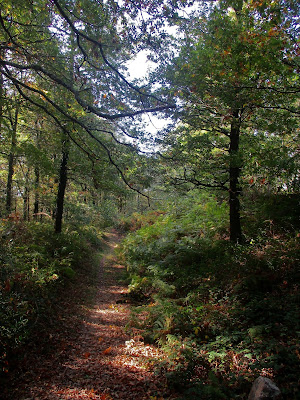 So, a wander up the tor was out. Instead we decided to visit a couple of local churches, the first of which was St Nicholas in West Pennard.
So, a wander up the tor was out. Instead we decided to visit a couple of local churches, the first of which was St Nicholas in West Pennard. I liked this more modern window, though ...
... with its wheeling crow. I haven't been able to discover who made it (though it reminds me a little of Harry Stammers' work).
Churchyard cross
After West Pennard we drove on to Shepton Mallet to have lunch.
First, though, we popped into the Church of SS Peter and Paul.
 There's something very solid about the interior. The pillars are massive and were probably part of walls that were pierced, possibly Saxon in origin.
There's something very solid about the interior. The pillars are massive and were probably part of walls that were pierced, possibly Saxon in origin.The church is famed for its wooden ceiling, carved with 350 panels of different designs, and 36 carved angels.
 'The finest 15th century carved oak wagon-roof in England', Pevsner said, though I couldn't make out any detail, even with the help of the mirror, and was none the wiser ...
'The finest 15th century carved oak wagon-roof in England', Pevsner said, though I couldn't make out any detail, even with the help of the mirror, and was none the wiser ...... until I saw this photo by Michael Garlick, from the Geograph website. Now you begin to see what old Pevsner was going on about. It's absolutely stunning.
I was also struck by the effigies of two late 13th century knights which have been placed on window ledges at the west and east end of the north aisle.
They must have a much better view where they are now ...
 ... all interesting and smudgy through the old glass.
... all interesting and smudgy through the old glass.
Nipping up into the pulpit
The brass memorial to William Strode who died in 1649 (with Death taking aim at his wife).
The sea holly on our table at lunch



















































